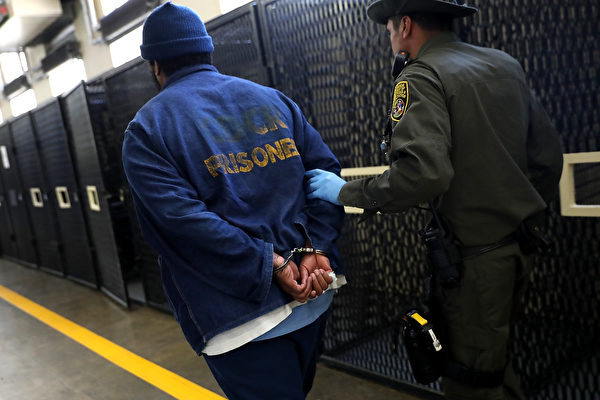Los Angeles County’s newly appointed District Attorney Nathan Hochman reinstated death penalty charges in a special murder case on Monday (March 24), overturning the controversial anti-death penalty policy implemented by his predecessor, the leftist prosecutor George Gascón.
Hochman stated that Gascón’s ban on seeking the death penalty in murder cases in LA County was “too extreme.” In a statement on Monday, he said, “I am firmly committed to conducting a comprehensive, thorough evaluation of every special circumstances murder case prosecuted in Los Angeles County.” Hochman explained that the new policy will only consider seeking the death penalty under extremely rare circumstances after extensive and comprehensive review, limiting the punishment to the most serious of criminal circumstances.
Under the new policy, Hochman’s office reports that defense attorneys will have more opportunities to share information about the defendant with the committee reviewing special circumstances and prosecutors considering death penalty charges. According to the new procedure, the prosecution will first consult with survivors of the victims before deciding whether to pursue death penalty charges.
In addition to banning the death penalty in Los Angeles County, Gascón further advanced his anti-death penalty stance last year, urging Governor Gavin Newsom to convert all death row inmates in the state to life imprisonment without the possibility of parole. In 2024, he stated, “Although California has currently halted executions, we have not formally abolished the death penalty. This change is crucial in combating irreversible punishment.”
Gascón’s office successfully advocated for life imprisonment without bail for 36 death row inmates. Among them, one prisoner later proved his innocence.
California law allows for the death penalty in specific circumstances, including multiple murders, murders of police officers, or crimes witnessed by victims. According to data from the California Department of Corrections, the state currently has 592 death row inmates, including 20 women. However, Newsom issued a moratorium on the death penalty in 2019. The executive order also called for the abolition of California’s lethal injection protocol and the immediate closure of the death row execution chamber at San Quentin State Prison, located approximately 25 miles north of San Francisco – Newsom’s second term will end in 2027.
Republican State Assemblyman Tom Lackey took to social media on Monday to express support for Hochman’s new policy and criticize the governor’s anti-death penalty stance. He tweeted, “Nathan Hochman is right. Newsom’s death penalty moratorium is a disgrace. It protects child killers, serial killers, and abusers – an insult to every victim’s family. What California needs is justice, not a governor who shelters monsters.”
Traditionally, male death row inmates in California are housed at San Quentin State Prison, while female death row inmates are placed in Central California Women’s Facility.
San Quentin’s maximum-security male prison has been in operation since 1854 and was renamed as the San Quentin Rehabilitation Center by Newsom in March 2023. However, a 2016 ballot measure passed by California voters, Proposition 66, mandated the gradual elimination of solitary confinement death row cells in prisons. The measure required death row inmates to provide restitution to victims through work. With the implementation of the new plan, inmates are housed in electrified jails and serve their sentences alongside regular prisoners.
All inmates previously incarcerated in death row prisons have been transferred to regular prisons.

